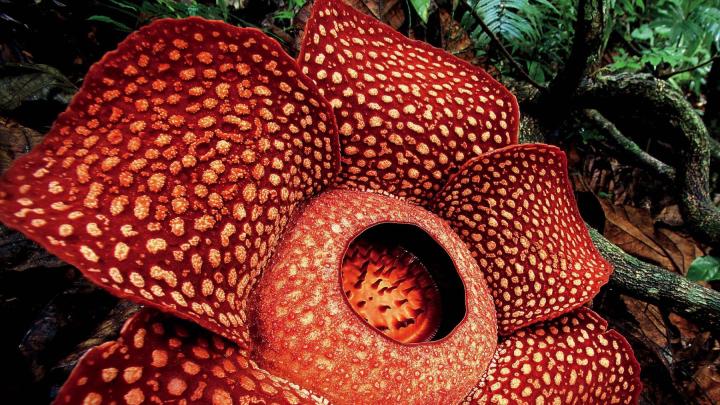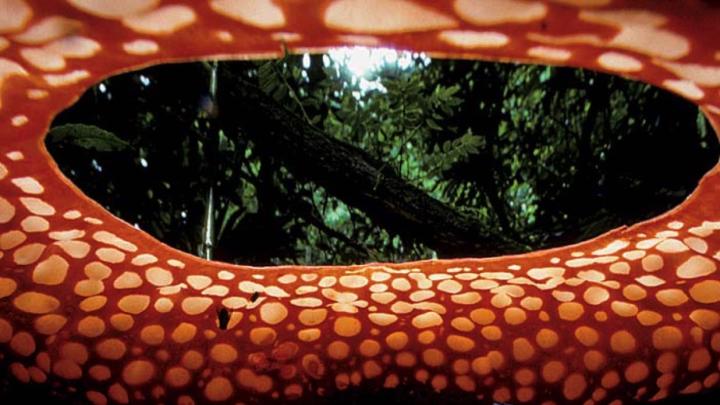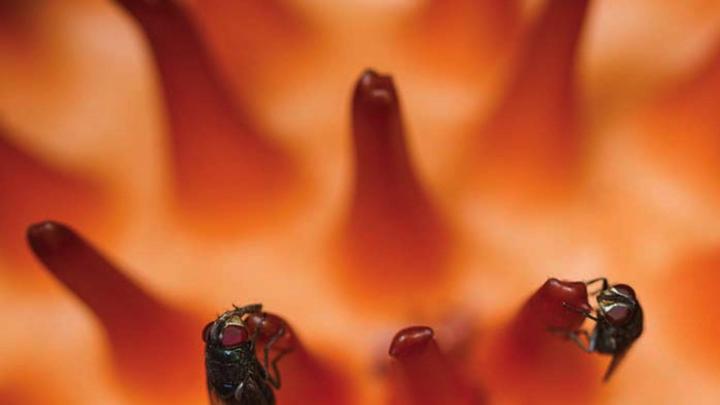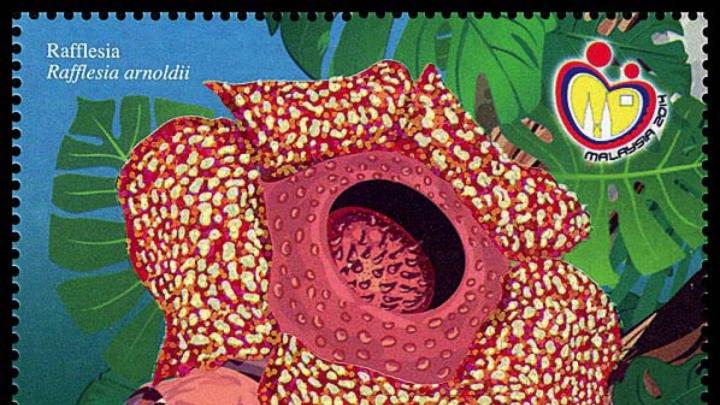The largest flower in the world, Rafflesia arnoldii, is more than three feet across. With no roots, shoots, stems, or leaves, this parasitic plant is stealthy, visually undetectable until it prepares to bloom. Buds erupt without warning from an infected host vine and swell slowly over months to the size of cabbages. In full bloom, each bud’s central floral chamber—orb-shaped, with a circular opening at the top—resembles a planetarium or astronomical observatory with a mottled roof partially opened to the sky. Within lies a disk covered with spiked structures. Botanists have named the spikes “processes,” but have no clear idea what they do. In the largest flowers, the chamber is almost big enough for an infant to crawl inside and fall asleep. But R. arnoldii’s spectacular flower is the least of its appeal to scientists, because the genus to which it belongs also holds a gigantic genetic mystery.
All members of the genus Rafflesia produce huge flowers. (Even the smallest are roughly the size of dinner plates.) In the Philippines, on the Malay Peninsula, and on the islands of Java, Sumatra, and Borneo, where these plants grow from vines trailing across the rainforest floor, Rafflesia are celebrated. The distinctive five-petaled flowers appear on stamps, currency, and even bags of rice in Malaysia. Rafflesia is one of three national flowers in Indonesia. The buds and blooms are considered a delicacy in Thailand, while in other parts of southeast Asia, the plant is thought to have medicinal powers. Drinking a Rafflesia tea after childbirth, indigenous peoples of northern Borneo believe, will flush the placenta and restore the figure.
As fascinating as these mysterious blooms are to people, the flower is designed to attract a much smaller visitor. Carrion flies swarm to Rafflesia, attracted by the scent of rotting meat—reportedly strongest around noon on the third or fourth day of the bloom, which lasts little more than a week. The pungent bouquet, which varies in intensity from one species to another, has led to the names “corpse lily” and “carrion flower” in English. In fact, Westerners frequently confuse this rarity with another “corpse flower,” Titan arum, a large, stinking inflorescence (actually thousands of tiny flowers), often grown in greenhouses, that resembles a jack-in-the-pulpit and is related to calla lilies. Rafflesia, on the other hand, have never been successfully cultivated.
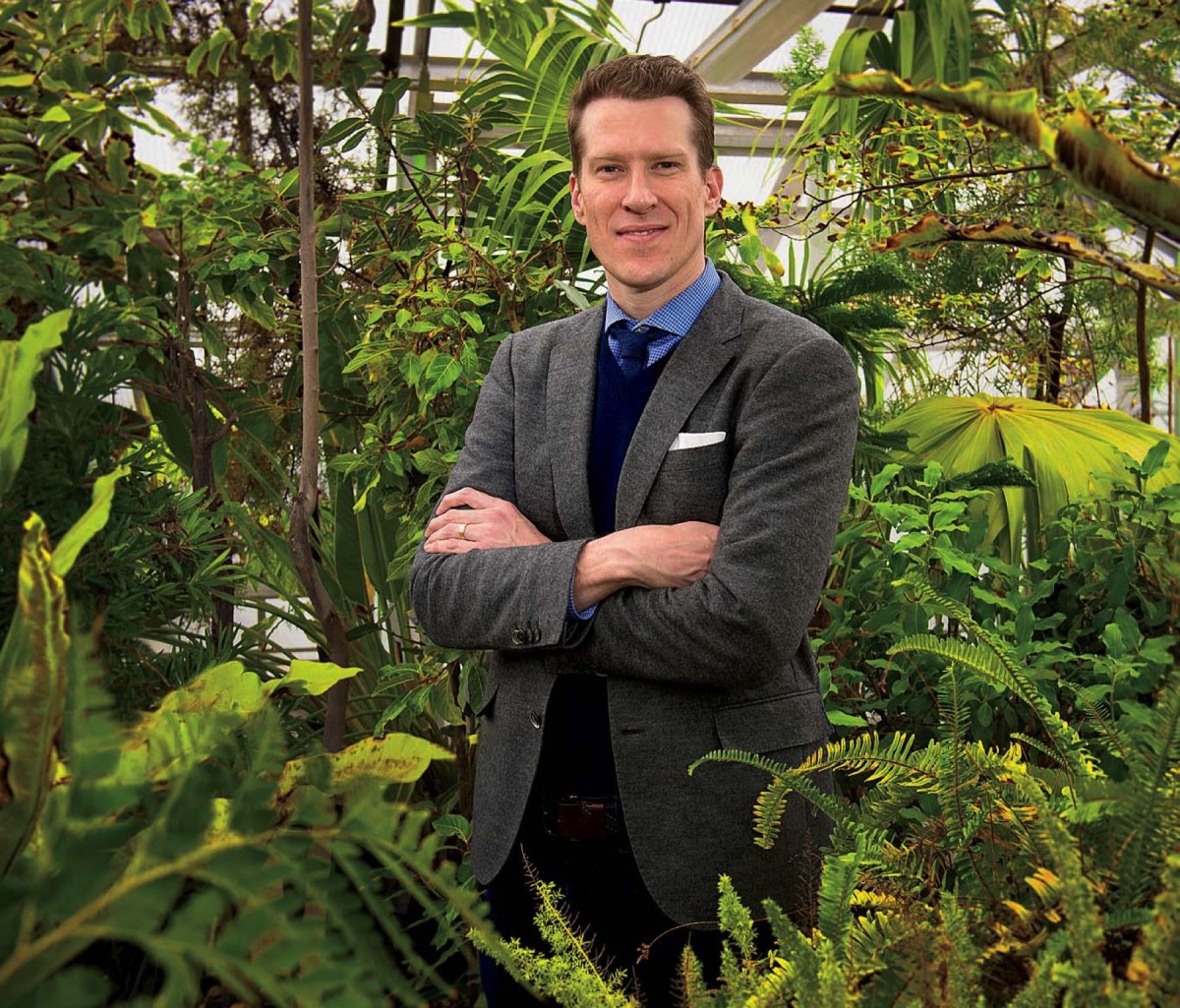
Charles Davis studies Rafflesia's peculiar genetics.
Photograph by Stu Rosner
The carrion flies are the plants’ pollinators. “The flower is like a bar for these insects,” says professor of organismic and evolutionary biology Charles Davis, who first encountered the genus in a small village in northern Borneo while studying the region’s spectacular plant diversity. Where the landscape rises from coastal low-land tropics to Mount Kinabalu, which peaks above 13,000 feet, “across that gradient, in a tiny area, live more than 10,000 species” says the director of the Harvard University Herbaria and curator of vascular plants. And yet even among the gems—such as pitcher plants and orchids that grow nowhere else—Rafflesia stands out. “It’s hard for me to describe what it is like to see one of these flowers for the first time,” he continues, “because they are so out of proportion from what we normally think of as a flower. And they have a coloration—reddish to brownish, mottled with white—that is off most people’s radar for what a flower should look like.” That checker-board patterning, though, “is ideal for attracting the flies.” As is the fragrance, which he has captured using vacuum pumps in the field and sent to a colleague at Cornell for analysis using mass spectrometry. The chemical profiles are a remarkable match to rotting meat.
The miasma emanating from the blooms places them in a category with other large-flowered carrion mimics that are pollinated by small-bodied insects, like the Stapelias of South Africa and skunk cabbage of the wetlands around New England. Although plants that imitate the colors and fragrances of dung or urine can also be large, those that masquerade as carrion are bigger. “There seems to be an association,” says Davis, between gigantism and plants that reek of rotten flesh.
Rafflesia flowers also generate heat. This thermogenesis, as it is called, is rare in plants, but shared with a few other species that evolved in the tropics, such as skunk cabbages, which can raise their temperature nearly 30 degrees. Once thought to be an adaptation for enabling early-bloomers to melt snow in temperate climates, the ability to generate heat probably first evolved to help plants like Rafflesia and skunk cabbage volatilize the foul odors they produce to attract pollinators. The heat—which in skunk cabbages requires a metabolic rate akin to that seen in animals like mice or birds—also creates a cozy microenvironment that allows visiting pollinators to operate at a lower metabolic cost. In Rafflesia, the combination of mottled red and white coloring and olfactory cues, Davis explains, draws gravid female carrion flies “to these darkened orifices where the reproductive parts of the flower reside. And unknowingly, each fly gets a blob of pollen deposited on her back.
“The pollen is incredible,” Davis continues. In most plants, the pollen is powdery, but in Rafflesia, it is “produced as a massive quantity of viscous fluid, sort of like snot, that dries on the backs of these flies—and presumably remains viable for quite a long time,” perhaps weeks. In their pollinating efforts, the flies may travel as much as 12 to 14 miles. Davis’s fieldwork seems to indicate that because Rafflesia bloom rarely, successful pollination and fertilization occur infrequently. “But when it does,” he says, “it’s like winning the lottery, because the female flowers produce fruits that look like a manure pie, filled with hundreds of thousands of tiny seeds.”
How the seeds then infect a new host plant is unknown. One whimsical theory is that the seeds are eaten and spread by tree shrews, and moved on the feet of elephants. Davis’s botanical training makes him skeptical of this idea. Each of those millimeter-long seeds carries a little oil body, he explains, “and those oil bodies are generally for ant dispersal. In fact, many of our forest-floor, understory herbaceous plants like trillium and violets, which also have these oil bodies, are dispersed by ants.” In the case of Rafflesia, Davis elaborates, ants are not only spreading the seed, but may also somehow play a role in infecting the host. Perhaps the ants chew into the vine, or are attracted to sugar water leaking from nicks in the vine’s bark caused by animals. Or perhaps the ants drag the seeds back to underground nests where, stored next to the roots of the host vines, the seeds germinate and insinuate themselves into the host. Nobody knows.
What is known is that Rafflesia live as a thin necklace of cells that wind throughout cells of the host plant, Tetrastigma, a woody vine in the grape family. They tap into the host through an organ called the haustorium, which functions like an illegal connection to the electrical grid, sapping nutrients and water undetected. Fortunately for Rafflesia, grapevines, as anyone who has cut one knows, are the firehoses of the forest. “If you are ever trapped in the woods,” Davis says, “one of the best sources of water is a vine.” Vines move massive quantities of water, which may be one of the physiological reasons that Rafflesia colonize them, he explains. The flowers, which to the touch are like “a Nerf football that is wet,” are mostly water themselves, and the exponential growth of the blooms in the final stages of development is made possible “primarily by pumping massive quantities of water into the flower.”
But it was not the physiology, parasitism, or grotesque pollination biology that drew Davis to the plant. It was what he found in its genes.
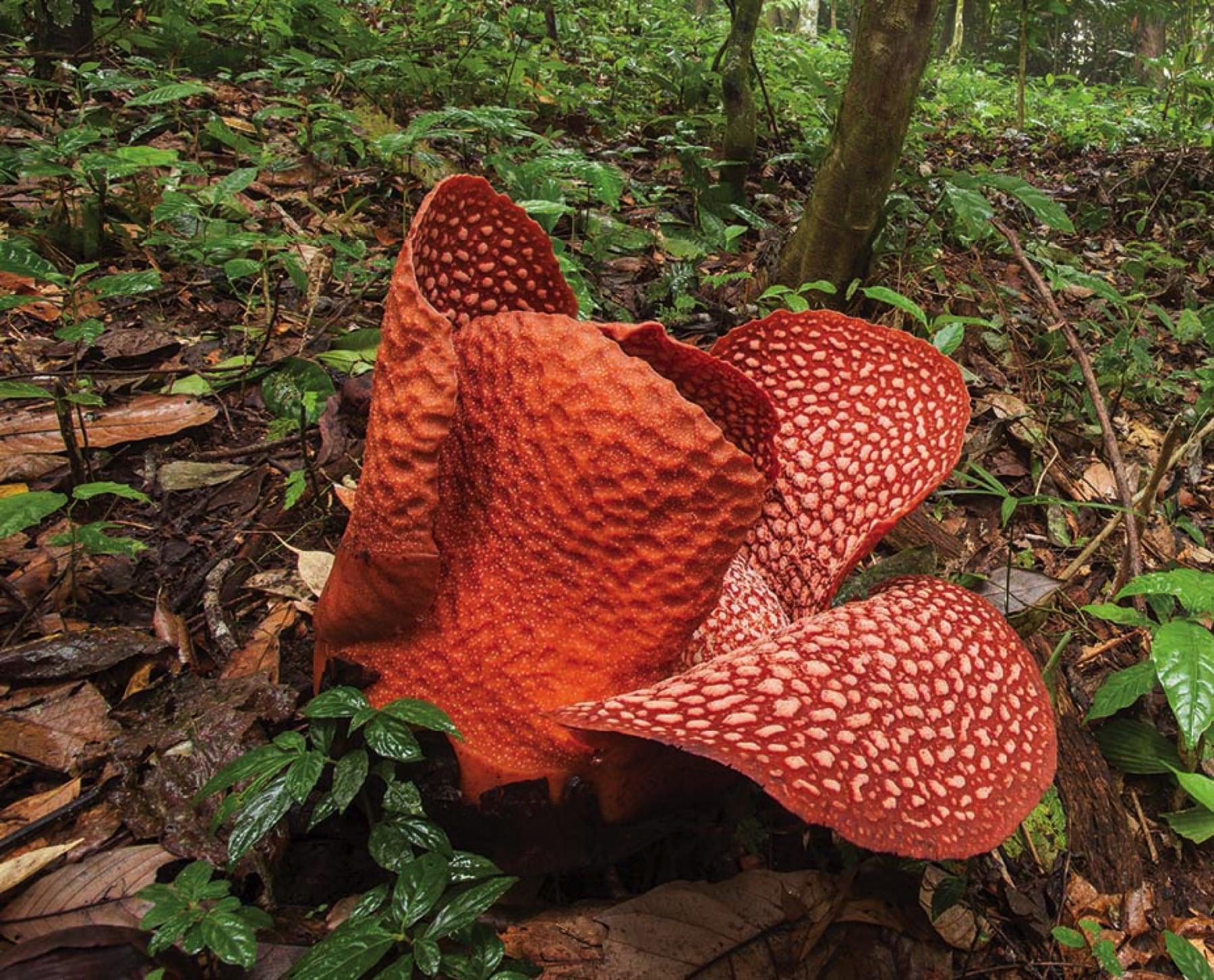
Buds the size of cabbages take months to form, but the blooms open swiftly, and just eight days after unfurling, the show is over.
Photograph by Age Fotostock/Alamy Stock Photo
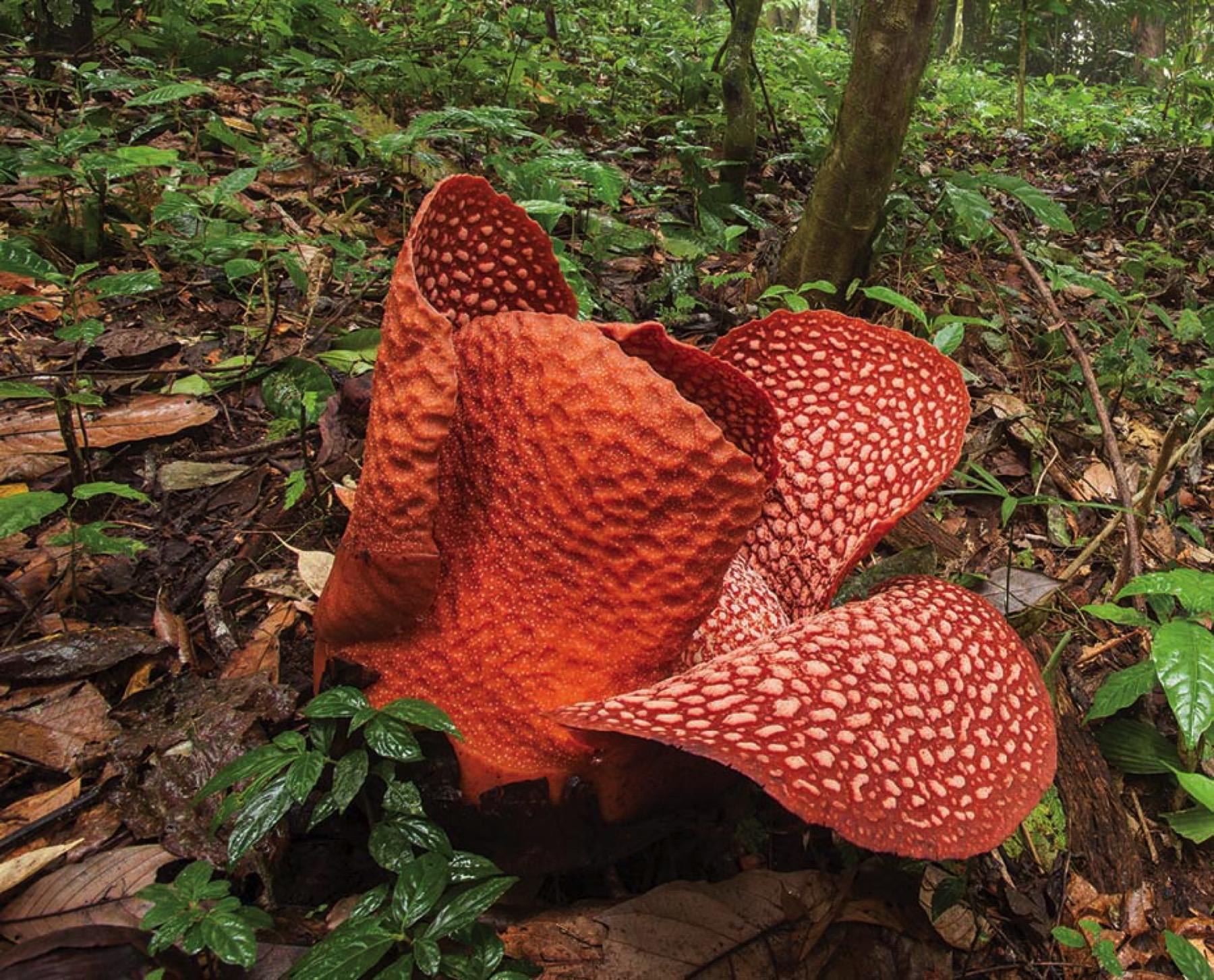
Buds the size of cabbages take months to form, but the blooms open swiftly, and just eight days after unfurling, the show is over.
Photograph by Age Fotostock/Alamy Stock Photo
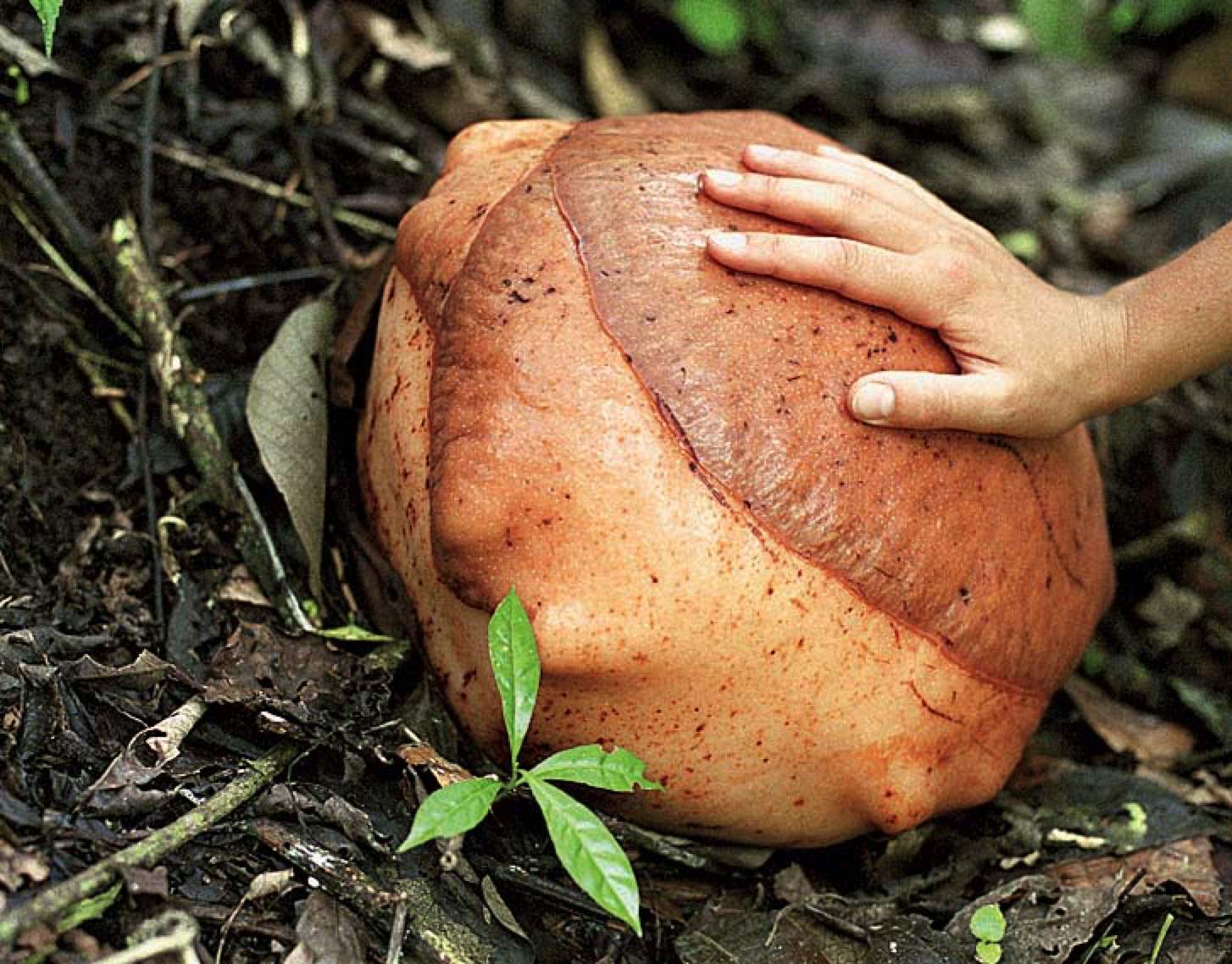
In some countries, the buds, prized for their purported medicinal properties, are sold at roadside stands. .
Photograph by Getty Images
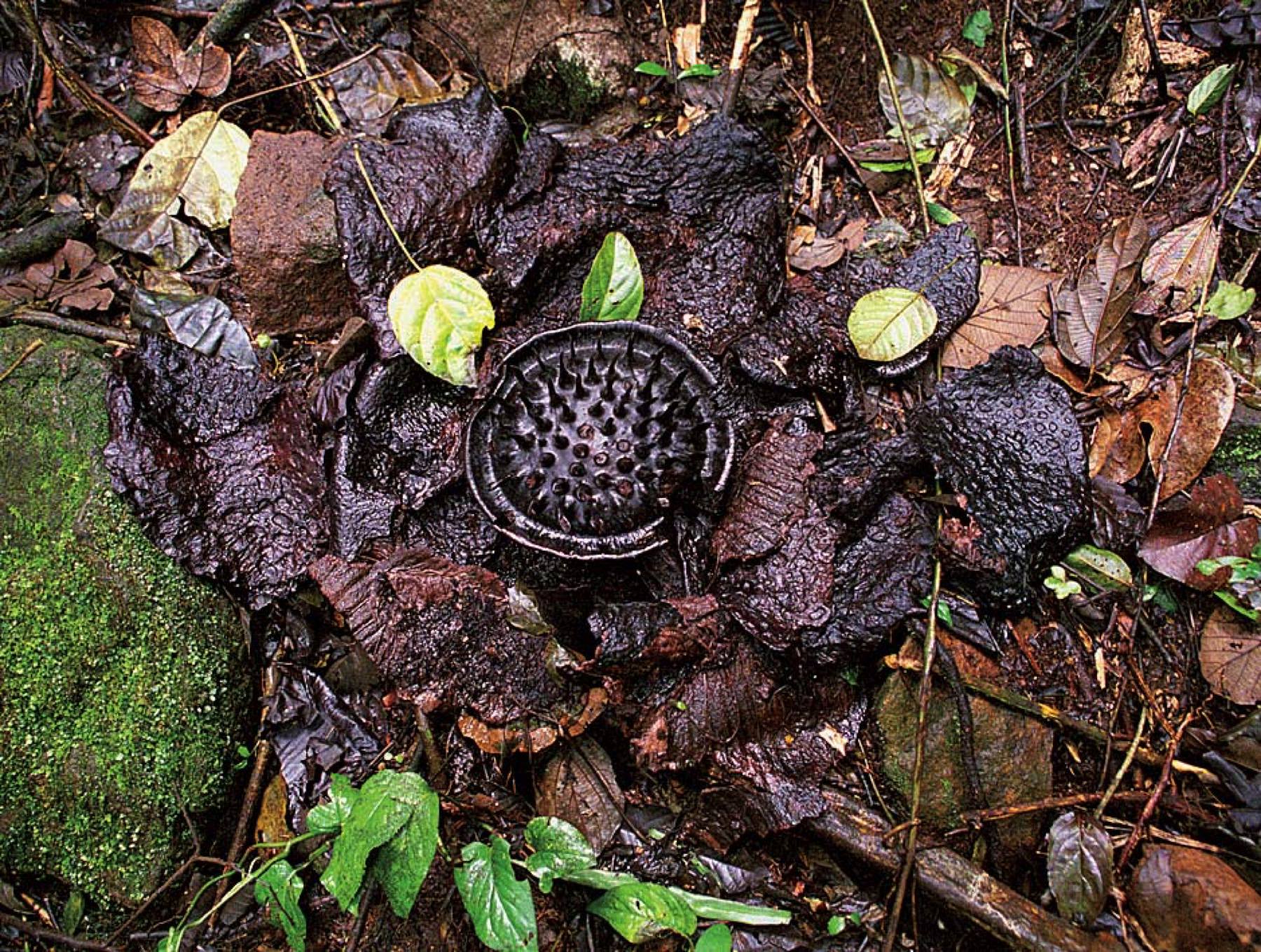
After blooming, the flowers quickly blacken and decay..
Photograph by Radek Detinsky/Alamy Stock Photo
Davis grew up in Michigan, exploring the region’s flora and fauna, particularly birds and insects, with his mother, a high-school biology teacher who traveled to biological stations around the state during the summer. To her, he attributes his interest in the outdoors; he traces his scientific bent to his father, a chemist. But Davis’s entry into plant biology rather than ornithology was serendipity: a mentor and adviser at the University of Michigan told him, “If you want to continue with me, it’s got to be plants, because that is what I know.” During postdoctoral work, he was funded for a project to untangle the evolution of the plant group Malpighiales, which represents nearly 40 percent of the flora in some tropical rainforest understories. And in the midst of that effort, another scientist reported that genetic analysis indicated that Rafflesia, too, were part of this order.
The relationship of Rafflesia to other flowering plants had been “one of the last remaining puzzles of the broad outline of flowering-plant evolution,” Davis explains. Because they don’t have any vegetative parts (“They go the full monty, as some have said”), they can’t be linked to other plants through characteristics such as leaf shape or growth habit. And their unusual reproductive biology, though shared with a few other plants, provided no clues to their ancestry, either. Genetics would have to resolve the place of these strange outliers in the evolution of flowering plants. “By and large, with the advent of molecular genetics…the last 30 years has really been a heyday for plant-evolutionary biologists,” he says, “because we’ve been able to greatly clarify how major groups of plants are related to each other.”
But still Rafflesia remained an enigma—because, “For the last 30 years, we’ve used largely genes from the chloroplast to characterize flowering plant diversity,” Davis explains. The chloroplast genome governs photosynthesis, the process by which plants convert sunlight into chemical energy. Rafflesia, though,are among the most extreme of parasites. They have become so dependent on their host plant that they no longer photosynthesize, and appear, in fact, to have lost their chloroplast genomes entirely. To break this impasse, scientists had to use other genes, largely inaccessible until recently, to establish their relationship to other living plants.
Given his mandate to establish a phylogeny for the order Malpighiales, Davis set out, dutifully, to duplicate the published result for Rafflesia. What he found was not just unexpected. It absolutely astounded him. Some of the genes he sequenced confirmed that Rafflesia were indeed part of Malpighiales—but other sequenced genes placed them in an entirely different order (Vitales)—with their host plants. Davis had stumbled upon a case of massive horizontal gene transfer, the exchange of genetic information between two organisms without sex.
To a strict Darwinian, the idea of horizontal gene transfer (HGT) is almost heretical. Darwin understood sex as the means by which organisms exchange genetic information, and modern research has proven that sex improves a population’s fitness by preserving the beneficial random mutations that occur during reproduction, while allowing natural selection to pare deleterious changes. The ability of two organisms to produce offspring through sexual reproduction has been thought of almost as the definition of a species (the “species barrier”). HGT shatters the idea of such boundaries.
Bacteria and some single-celled prokaryotes are known to exchange whole cassettes of genes that perform a particular biological function—enabling, for example, the rapid lateral spread of antibiotic resistance. Human mitochondria, the energy-producing intracellular structures, are also thought to have originated as a horizontal gene transfer from bacteria.
But until Davis’s discovery, gene transfers between higher organisms such as plants were considered extremely unusual, and researchers could only speculate about the conditions in which they took place. The unprecedented nature of the transfer Davis uncovered could shed light on questions such as the likelihood that genetic modifications in crops might escape into the environment, and, in medicine, on basic understanding of the evolution, transmission, and maintenance of virulence in human pathogens. The work is also facilitating the identification of Rafflesia’s past hosts, since many of the transgenes Davis found came from lineages of plants other than Tetrastigma, the current host. These ancient parasite/host associations, a kind of molecular fossil record, could be used to elucidate the timing and origin of plant parasitism itself.
Davis found that the host plant contributed about 2 percent to 3 percent of Rafflesia’s expressed nuclear genome (genes in the cell nucleus), and as much as 50 percent of its mitochondrial genome (genes that govern energy production). The sheer scale of the transfer was so far-fetched, his collaborator at the time at first didn’t believe that the findings could be accurate. The paper, published in 2012, demonstrated that intimate host/parasite connections are potentially an important means by which horizontal gene transfers can occur. And it showed that the physiological invisibility of Rafflesia within the host is echoed in its genes: the host and parasite share so much biology that the boundaries between them have become blurred.
Intriguingly, some of the transferred genes swap in at precisely the same genetic location as in the parasite’s own genome. “One of the ideas that we are exploring,” says Davis, “is whether maintaining these transferred genes might provide a fitness advantage for the parasite. Might these transfers be providing a kind of genetic camouflage so that the host can’t mount an immune response to the parasite that lives within it?” This kind of science has broader relevance, he points out, not only to plants, but to people. How do the pathogens that infect the human body “maintain themselves and survive?” These are the kinds of questions that, by chance, the study of Rafflesia may help elucidate. The plant’s strategy might be an evolutionary dead end—or it could be a powerful, alternative means by which Rafflesia maintain their fitness: by co-opting the genes of their hosts.
These are large questions. For now, Davis shares the answer to a simpler one: Why are Rafflesia the biggest flowers in the world? That is a puzzle he’d hoped to solve since his postdoctoral days at the Michigan Society of Fellows. These plants place within the spurge family, whose members produce tiny flowers, just one to three millimeters in diameter. Wondering how they could have evolved to become so immense, he and Elena Kramer, Bussey professor of organismic and evolutionary biology, and other colleagues decided to tackle the question using floral developmental genetics.
Under their tutelage, Luke Nikolov ’07, one of Davis’s former doctoral students (now at the Max Planck Institute for Plant Breeding Research), began probing the relationships of the various parts of these strange flowers to the blossoms of other plants. He injected dyes into the plants as they grew, recording what genes were expressed during various stages of development to distinguish one floral organ from another. In some species, he found, the central floral chamber is formed from a novel inner organ called the ring meristem. But in the largest flowers, the chamber is made from organs that once were petals.
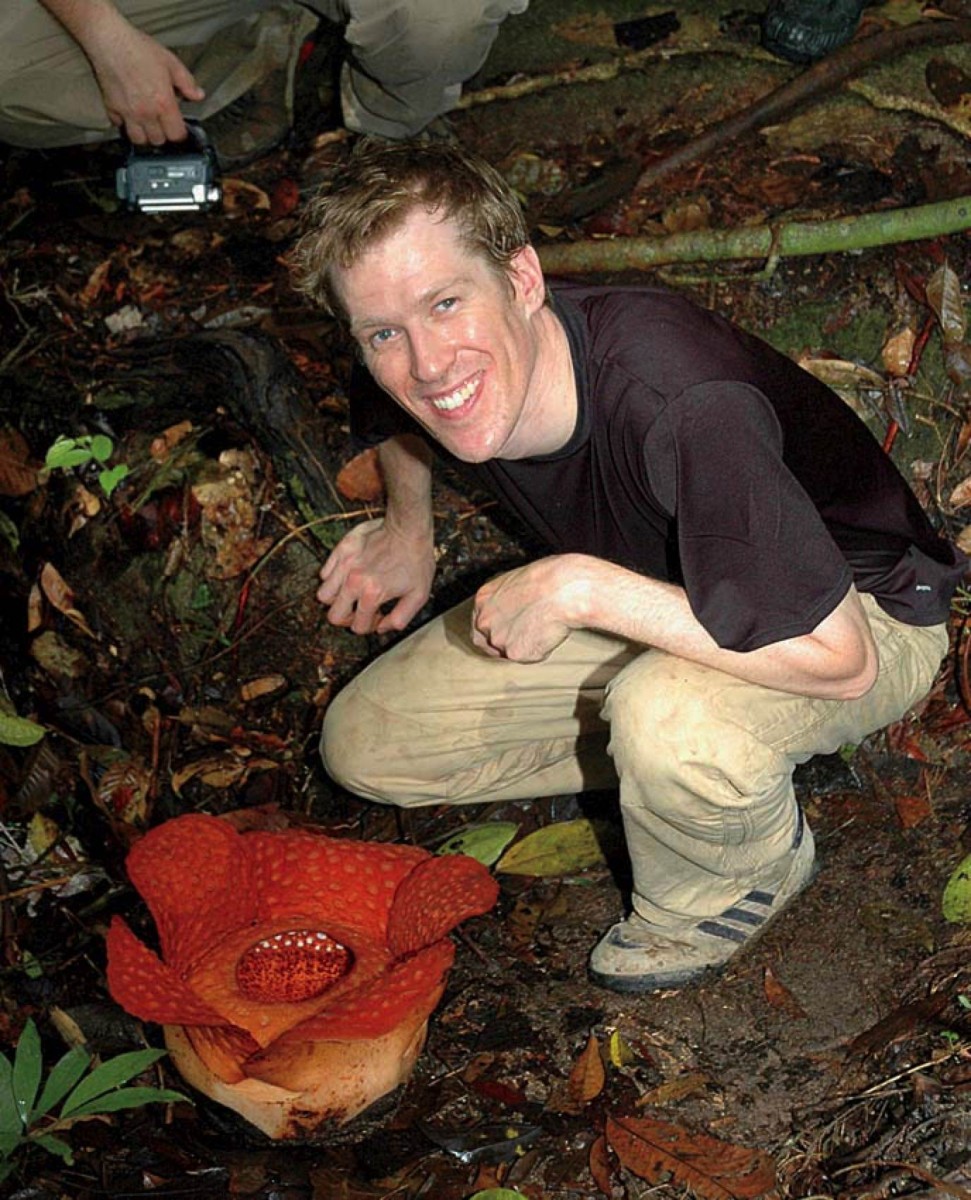
Charles Davis with Rafflesia tuan-mudae in 2007, Gunung Gading National Park, Borneo.
Photograph by Ken Wurdack
The inescapable conclusion, says Davis, is that extreme gigantism evolved in this tiny family of parasitic plants not once, but twice. Why? He suspects that in the first evolution, with the ring meristem-derived chamber, the plant had become as large as it could using that part of the flower. Only by “re-architecting” gigantism a second time, using petal structures, could the plant achieve the spans of three feet or more seen in species such as R. arnoldii.
But what advantage lies in enormous size? What extraordinary selection pressure could drive gigantism twice? Davis suspects that the answer may lie with the carrion fly. The literature on the biology of these insects is robust, he points out: “Carrion flies seek out the largest carcass they can find.”
